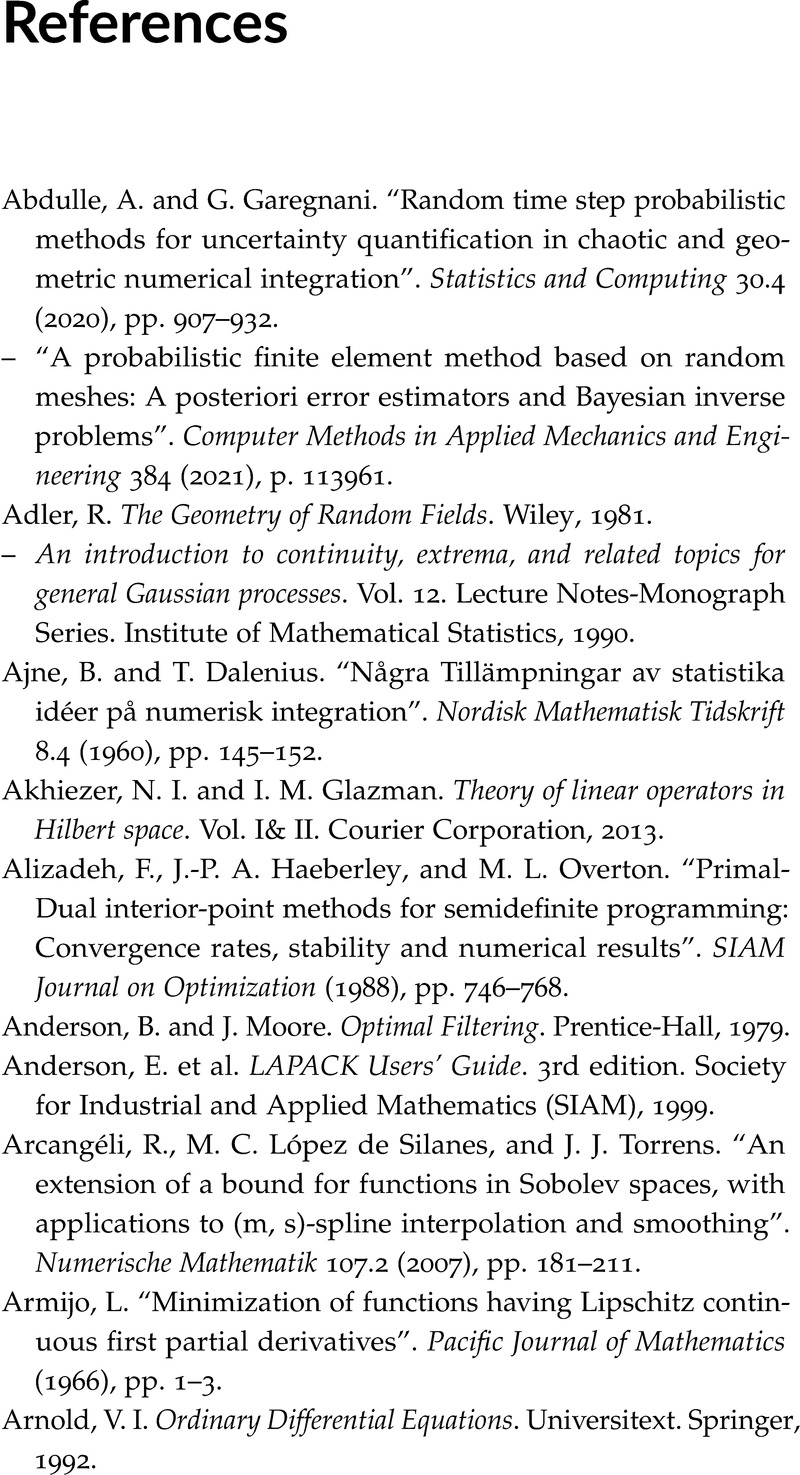Book contents
- Frontmatter
- Dedication
- Frontmatter
- Contents
- Acknowledgements
- Symbols and Notation
- Introduction
- I Mathematical Background
- II Integration
- III Linear Algebra
- IV Local Optimisation
- V Global Optimisation
- VI Solving Ordinary Differential Equations
- VII The Frontier
- VIII Solutions to Exercises
- References
- Index
- References
References
Published online by Cambridge University Press: 01 June 2022
- Frontmatter
- Dedication
- Frontmatter
- Contents
- Acknowledgements
- Symbols and Notation
- Introduction
- I Mathematical Background
- II Integration
- III Linear Algebra
- IV Local Optimisation
- V Global Optimisation
- VI Solving Ordinary Differential Equations
- VII The Frontier
- VIII Solutions to Exercises
- References
- Index
- References
Summary

- Type
- Chapter
- Information
- Probabilistic NumericsComputation as Machine Learning, pp. 369 - 394Publisher: Cambridge University PressPrint publication year: 2022



